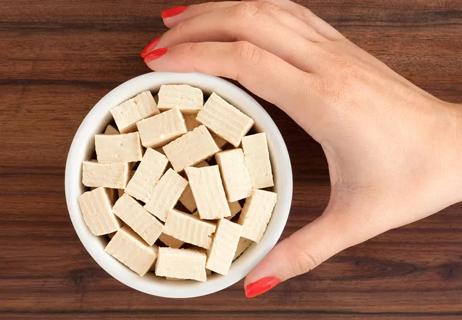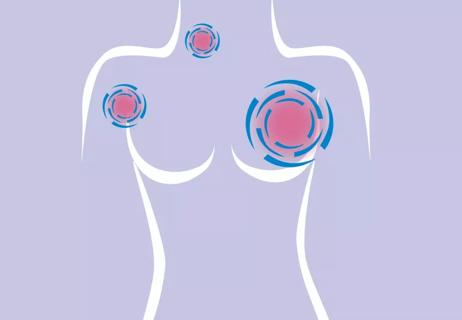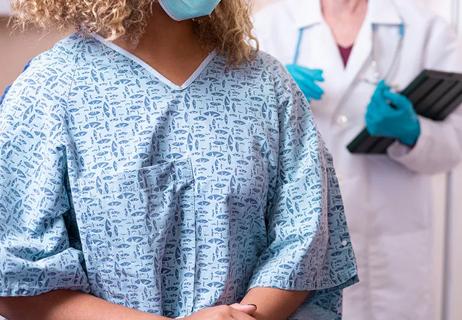Lumps may move and you may feel pain, but breast discharge typically isn’t a sign of cancer

You can never be too safe when it comes to breast cancer. Doing self-exams, having mammograms and watching for warning signs can save your life.
Advertisement
Cleveland Clinic is a non-profit academic medical center. Advertising on our site helps support our mission. We do not endorse non-Cleveland Clinic products or services. Policy
Raised awareness and more candidness about breast health is a good thing. But it also has fueled some common misperceptions.
Oncologist Megan Kruse, MD, explains the common breast cancer symptoms and the truth behind five false signs of breast cancer.
Breast cancer is the second-leading cause of cancer death in women and people assigned female at birth (AFAB). And while there are different types of breast cancer, symptoms typically include:
It’s important to note that symptoms can vary from person to person — and that some people might not even notice any symptoms.
While you should speak to a healthcare provider if you have any concerns, there are some common myths out there. Dr. Kruse sets the record straight.
Advertisement
“Actually, most breast cancers begin in a movable state,” Dr. Kruse says. “It’s often not until they grow larger that they attach to something and stop moving.”
You should tell your healthcare provider about any lump you feel in your breast.
When doing a self-exam, feel around your breasts for something hard that doesn’t belong there, Dr. Kruse advises. It may feel like a frozen pea or lima bean, or be smooth and very firm, like a marble.
That’s not entirely true. Breast cancers can be painful depending on where they occur in a breast, especially if growing quickly. Breast pain in one consistent particular spot is a warning sign.
Can dense breast tissue cause pain? Tenderness or pain in your breast isn’t generally related to breast density.
“Most women experience general breast pain or soreness that comes and goes,” Dr. Kruse says. “That’s not a sign of cancer, but usually due to hormone fluctuations or too much caffeine.”
False. “Lumpy breast tissue has nothing to do with breast density,” Dr. Kruse clarifies. “Your breasts can feel lumpy but not appear dense on a mammogram.”
Nearly 1 in 2 women have dense breast tissue, indicated by the amount of milk glands and ducts and supportive tissue, which appear solid white on a mammogram.
Because cancer can appear the same way, women with dense breasts may choose to have 3D mammography for better cancer detection and fewer false positives. Women at high risk may qualify for MRI screening.
Wrong. Neither you nor your healthcare provider — no matter how good they are — can tell whether a lump is cancer without diagnostic imaging.
“Providers who say, ‘It’s probably OK,’ without investigating further may cause a delay in diagnosing breast cancer,” Dr. Kruse cautions. “Don’t let your doctor guess. Get imaging.”
When there’s a lump of concern, women age 30 and older will have a diagnostic mammogram and ultrasound. An ultrasound helps evaluate a mass by assessing whether it is solid or fluid filled. Women under age 30 will have only an ultrasound because younger, denser breasts are difficult to evaluate by mammogram.
Suspicious lumps should be biopsied. Typically, a sample of tissue is drawn through a needle. Then, the tissue is studied under a microscope.
Is there such a thing as breast cancer discharge? In most cases, no. Many women have leftover milk in their ducts after breastfeeding, or they have debris that can cause greenish or even black discharge that can be squeezed out of the ducts, Dr. Kruse explains.
Advertisement
“What’s more concerning is bloody or clear discharge that leaks out when you’re not squeezing,” she says. “This type of discharge can be a sign of breast cancer about 10% of the time. Even with bloody nipple discharge, the cause is usually a benign condition inside the milk duct.”
Lumps, pain and other breast abnormalities affect almost every woman at some point. Usually, they aren’t cancer but getting them checked out is a must. Most of the time, you can’t safely rule out cancer without a proper evaluation.
“Many of my patients with breast cancer note that they had the lump for a number of months before bringing it to medical attention. The sooner a lump is evaluated, the better the chances of cure if it’s found to be cancer and the sooner a patient will receive reassurance if the lump is not cancerous,” says Dr. Kruse.
“Many types of medical providers can help to evaluate a breast lump, including primary care providers, Ob/Gyn providers and other breast specialists. The more familiar you’re with your own breasts, the better you will be able to help your provider act appropriately when a change is found.”
Advertisement
Learn more about our editorial process.
Advertisement

The answer is yes — but there are things you can do to help boost your energy

Physical activity and weight management can minimize your chances of getting the disease

Research consistently shows that soy-based foods do not increase cancer risk

Being informed can help you feel more confident about your care decisions

Metastatic breast cancer can spread anywhere in your body

Opt for fruits and vegetables, whole grains and lean protein to stay healthy

The short answer from a radiologist

Type 2 diabetes isn’t inevitable with these dietary changes

Applying a hot or cold compress can help with pain